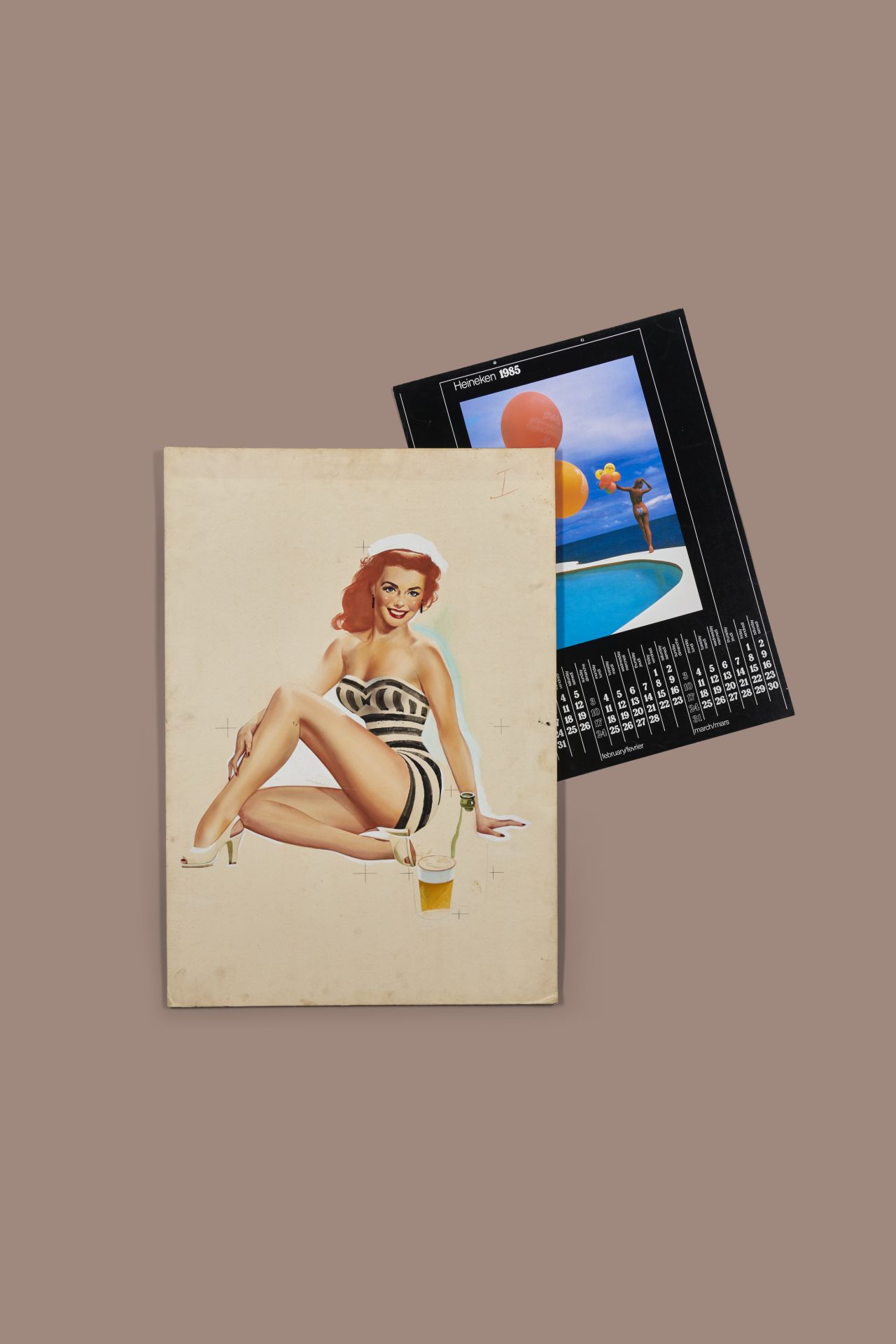INFO
Design for a calendar sheet for Heineken Venezuela
1956
gouache on cardboard
h 73.2 x w 51.2 cm
Heineken pin-up calendar
1985
offset printing on paper
h 55.8 x w 40 cm

Pin-up or horse-drawn cart?
Advertising psychology is an interesting phenomenon. As early as the 1950s, the heyday of the pin-up, Heineken employees were already applying it. But comparing a lady in a swimming suit with an old horse-drawn cart, wasn’t that going a bit far?
In Heineken’s own periodical Vers van ‘t Vat, beer connoisseur J. van der Zwaal made this curious comparison in his article ‘Climate Difference.’ The popular poster with the nostalgic cart – which the author referred to as the ‘horse painting’ – in 1956 was ‘still one of the most widely sought-after advertisements. The fact that we are still meeting that demand shows that even in advertising one should and must take into account traditions, taste averages and the national character!’

Horse painting
The ‘horse picture,’ he continued, ‘so popular in the Veluwe [region] and in the province of North Brabant, would not merit viewing in warm-blooded Venezuela. On the other hand, the calendar (...) issued by our brewery in Venezuela would raise quite a protest in our stolid country.’
Stereotypical
Indeed, after the Second World War, the Netherlands was not the right market for semi-nude calendars. However, that soon changed under the influence of America the ‘liberator.’ Following Hollywood movies, with seductive actresses like Marilyn Monroe, popular culture spread across Western Europe. The pin-ups, pictures of provocative, scantily clad ladies to pin to the wall, also created a stereotypical image of the ideal woman in Dutch men’s minds. A woman who would later serve as a model for Barbie: long, luxuriant hair, full lips, an hourglass figure and white or at most lightly tinted skin.
Aesthetic nudity
Heineken’s advertising department did not consider the time ripe for a Dutch edition until the early 1970s, although it was expressly ‘intended for export.’ This 1985 edition features four aesthetic nude photographs, as they were called at the time, one for every three months. The first page, featuring a woman in a thong in the distance, with a bunch of huge coloured balloons drew the most attention. The Heineken pin-up calendar appeared through 1996. Apparently, that is when the realization dawned that erotic merchandise for straight men who like beer and women was outdated. However, the Pin-Up’s birthday calendar was published in 2011, a survey of nostalgic advertising images from the Heineken Collection including the Venezuelan pin-ups . A safe choice, almost sixty years after the fact.
